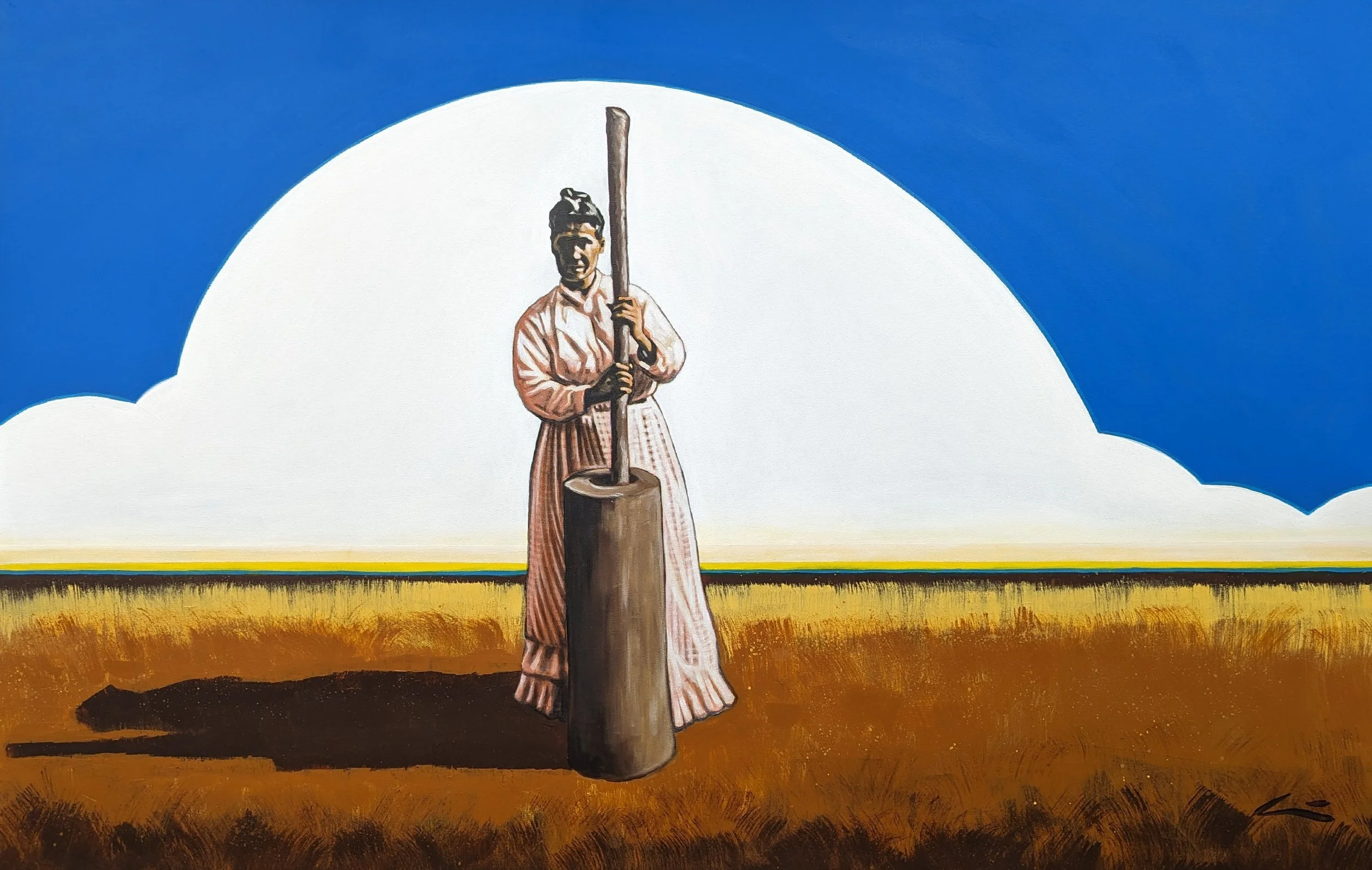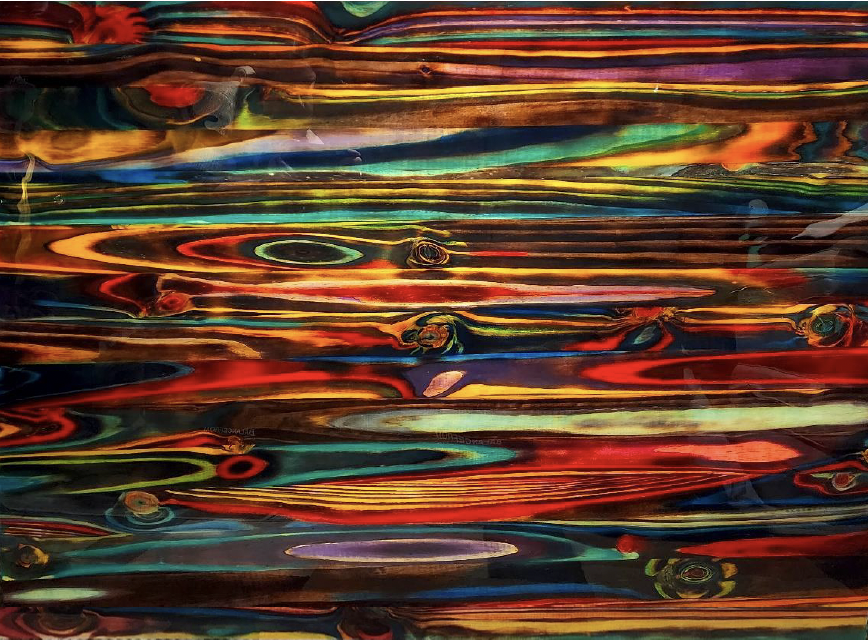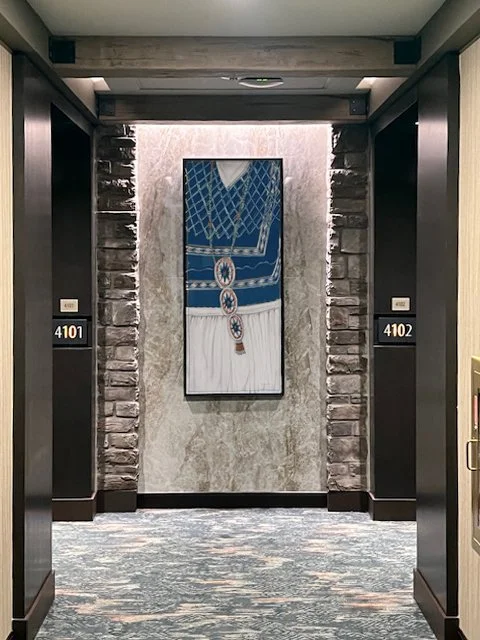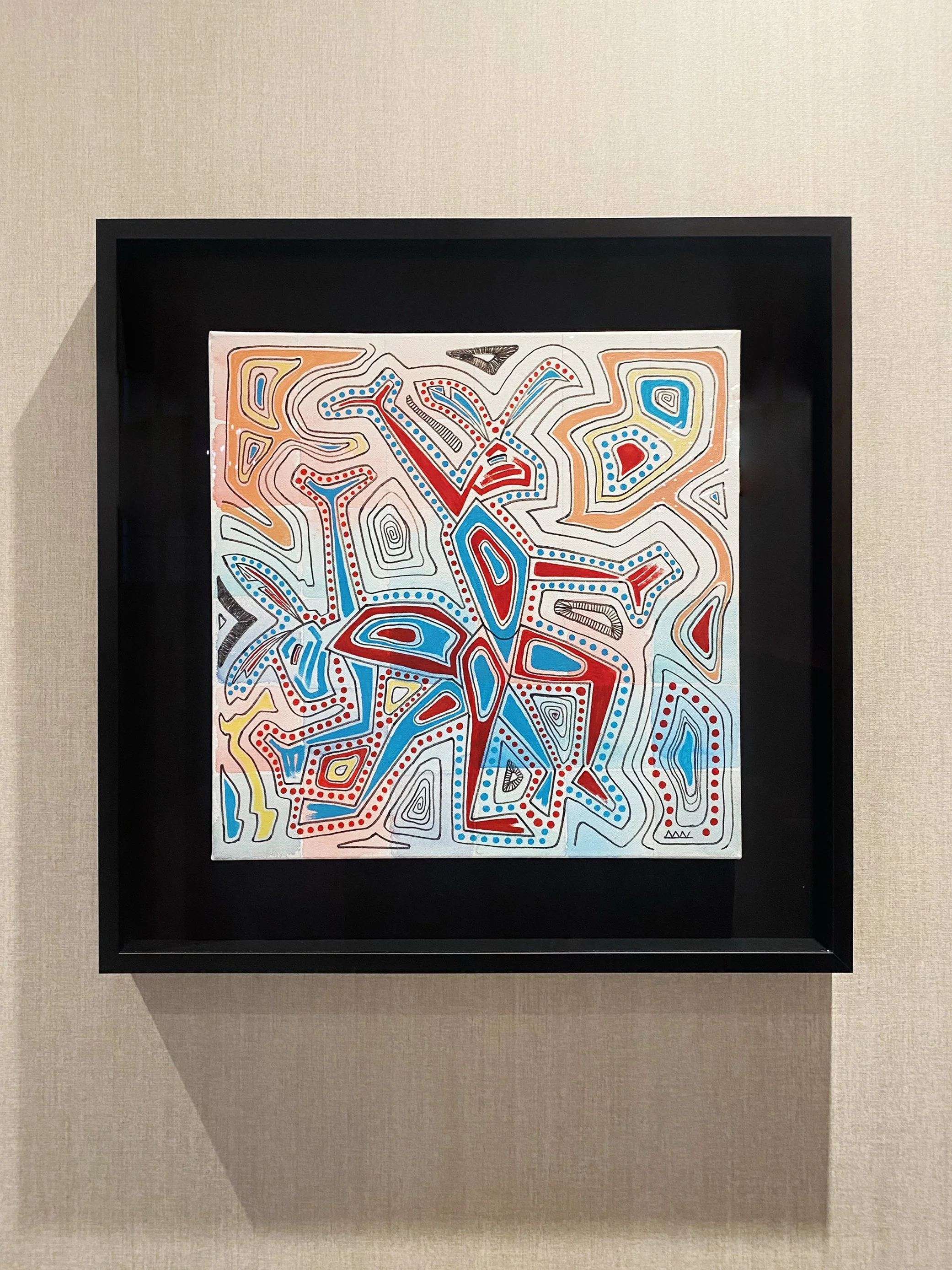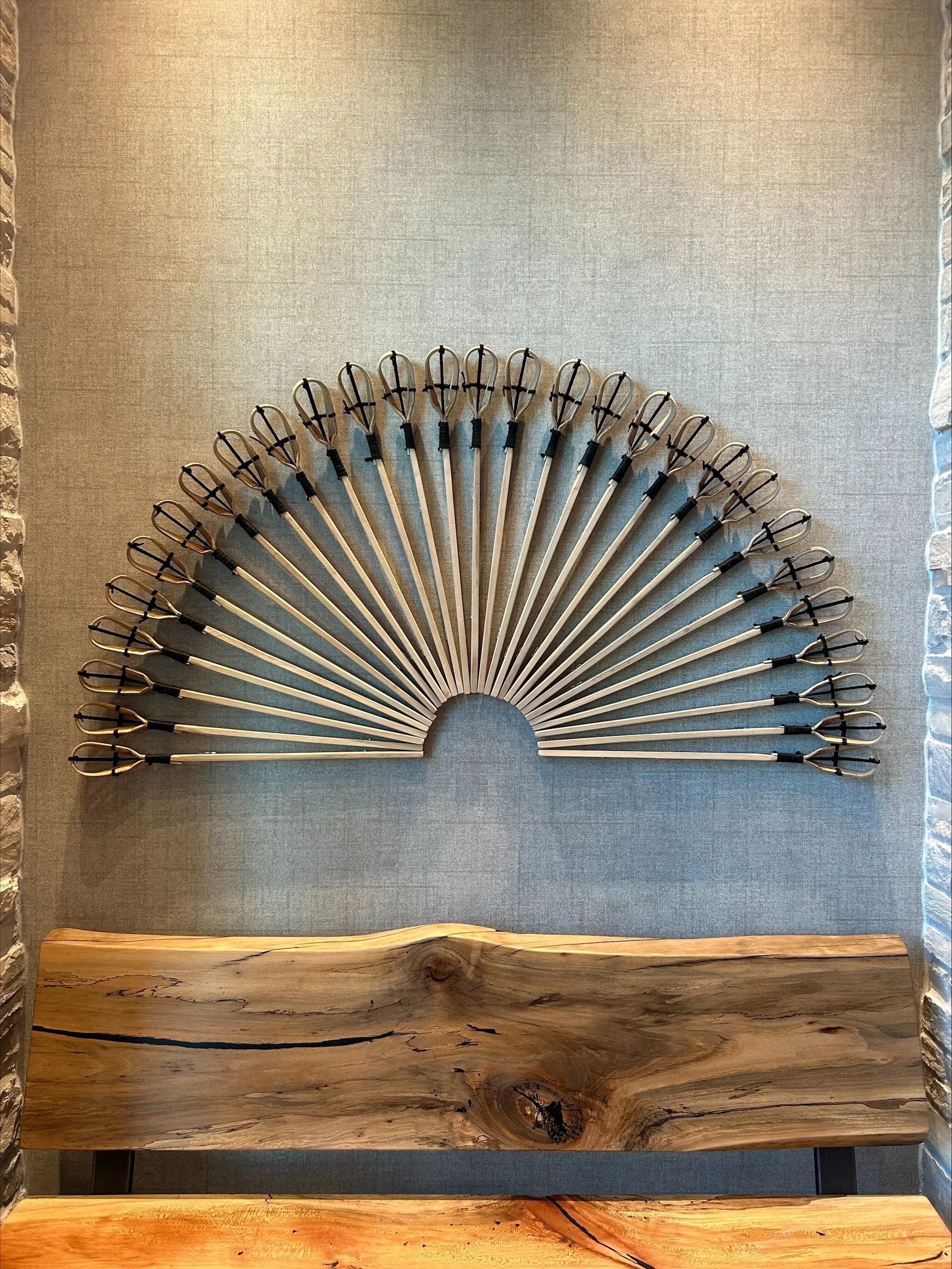
Hochatown, OK
Choctaw Landing
The opening of the $238 million Choctaw Landing resort marked a significant economic milestone for southeast Oklahoma, creating over 400 jobs and generating an estimated $95 million economic impact. My team at Farmboy Fine Arts took a multi-tiered approach to developing a thoughtfully curated art collection that reflects both the cultural heritage and vision of the project.
In close collaboration with the Choctaw Nation, we launched an open call to ensure diverse artistic representation, embracing a wide spectrum of expressions while honoring Choctaw traditions. We partnered with over 20 Choctaw artists from across the country to create original works, integrating culture-rich storytelling throughout the resort.
The collection features 40 original artworks in public spaces, two large-scale commissioned exterior sculptures—including an interactive steel piece celebrating Choctaw dancers—and 600 artworks enhancing guest rooms. This dynamic collection not only enriches the resort experience but also serves as a lasting tribute to Choctaw artistry and identity.
The resort includes:
100 guest rooms with 15 suites
Three conference rooms and more than 4,300 square feet of meeting space
One hotel restaurant and three outdoor dining/bar options
Resort fitness center
Pool area with nine cabanas, two hot tubs and three fire pits
Outdoor amphitheater with seating for 125
Casino with 600 slot machines and eight table games including roulette and blackjack
Mercantile with gifts, groceries, a deli, a Starbucks and a 24-pump fuel station
Naturally Amazing
Photography by Garrett Rowland
Featured Artist | Gregg StandridgeArt Advisor
Farmboy Fine Arts
Project Location
Hochatown, Oklahoma
Interior Designer
JCJ Architecture
Project Scope
Guestrooms, Guest Corridors, and Public Areas: Casino, Tuklo Restaurant, VIP Lounge, and Exterior Sculptures

Gregg Standridge’s “Lonesome Coyote” art piece is made of Cut & Dyed Wood Inlay Marquetry. Displayed in a more contemporary framing style it becomes a nod to pop culture
Many Voices, One Community
The mural by Bobby Von Martin at Tuklo Restaurant immerses guests in Choctaw tradition, celebrating the central role of food and cooking within the community. Surrounding this theme are rich depictions of cultural artistry, including intricate basket weaving, skillfully crafted stickball sticks, and the sewing of traditional Choctaw dresses. Inspired by archival photographs, the mural pays homage to real members of the community, grounding the space in authenticity and heritage.
Mural by Bobby Von Martin
Honoring Heritage
Also featured in the restaurant are two commissioned paintings by Dylan Cavin, which bring archival imagery to life through a vibrant palette, paying tribute to the culture bearers of the Choctaw Nation. These artworks create a dynamic and meaningful dining experience, seamlessly blending tradition with contemporary expression.
Emily Bloomquist’s Chahta Aiisht Ia Ammona (The Rise of Choctaw) is a striking vertical composition crafted from wood, gel stain, and epoxy resin. Each wooden strip, arranged from top to bottom, tells a chapter of the Chahta people’s journey—from their origins at the dawn of creation to the hardship of the Trail of Tears and their enduring presence in Oklahoma.
The artwork’s intricately twisted edge reflects the border of The Great Seal of the Choctaw Nation, symbolizing unity and resilience. Bloomquist carefully selected each wood species for its organic forms, evoking elements of nature and animals—bones, feathers, turtles, and snakes—infusing the piece with layers of hidden meaning. A powerful fusion of storytelling and materiality, this commissioned work stands as a testament to Choctaw heritage and strength.
Dylan Cavin 'Horizons, 2024' Acrylic on Canvas
"Chahta Aiisht ia Ammona – (The Rise of Choctaw)" by Emily Bloomquist, Wood, Gel Stain, Epoxy Resin

Emily Bloomquist's intricately twisted edge reflects the border of The Great Seal of the Choctaw Nation.
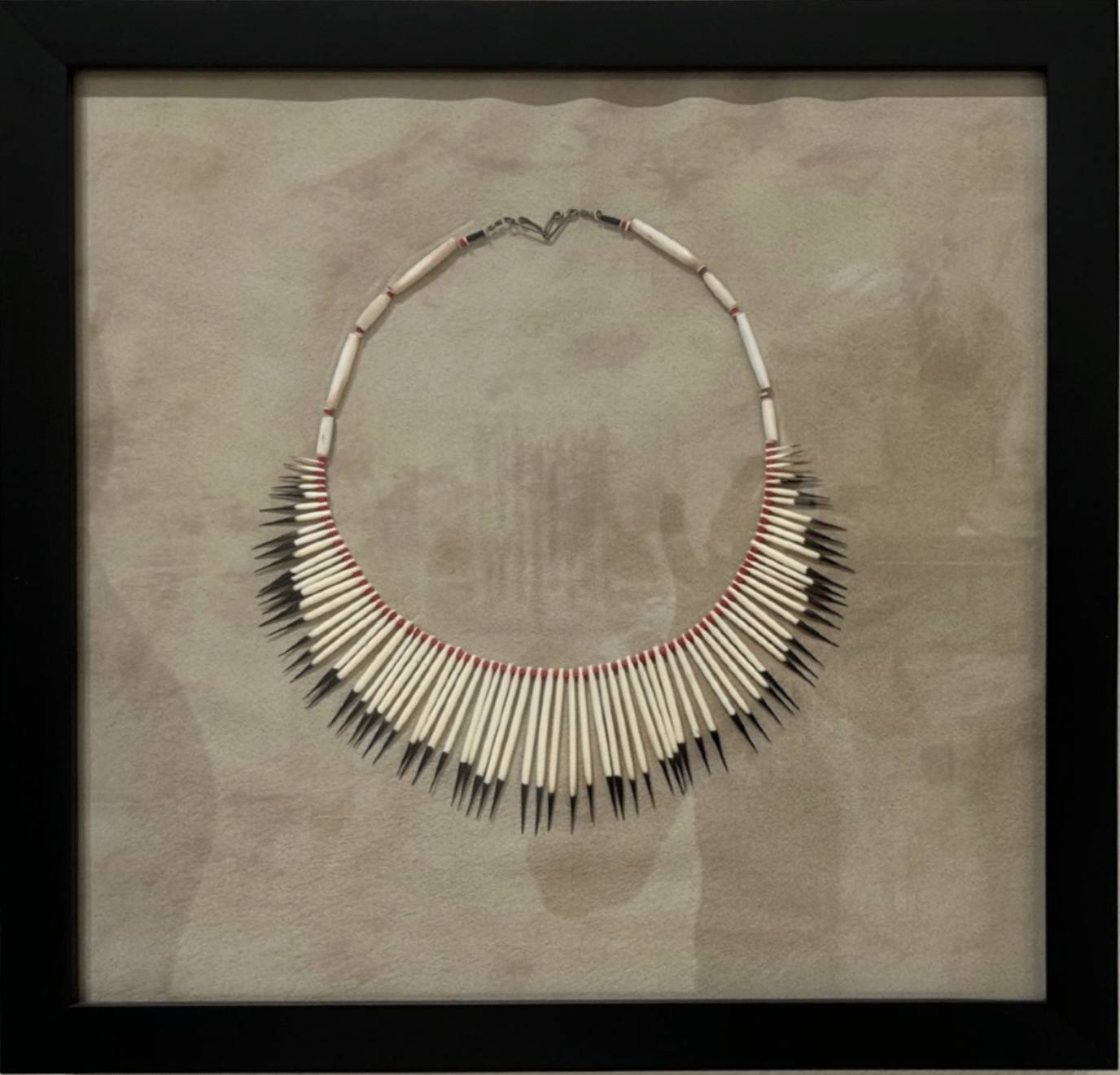
Robert (Bob) Proctor, 'Another Gift for Andrew Jackson,' Porcupine Quills, Bone, Sterling Silver, Seed Beads

Connie Phillips, 'The Guardian,' mixed media on paper; features a bald cypress tree known for their beautiful and unique bark and knee system. This species grows down the riverbanks of only three rivers in northern Oklahoma.
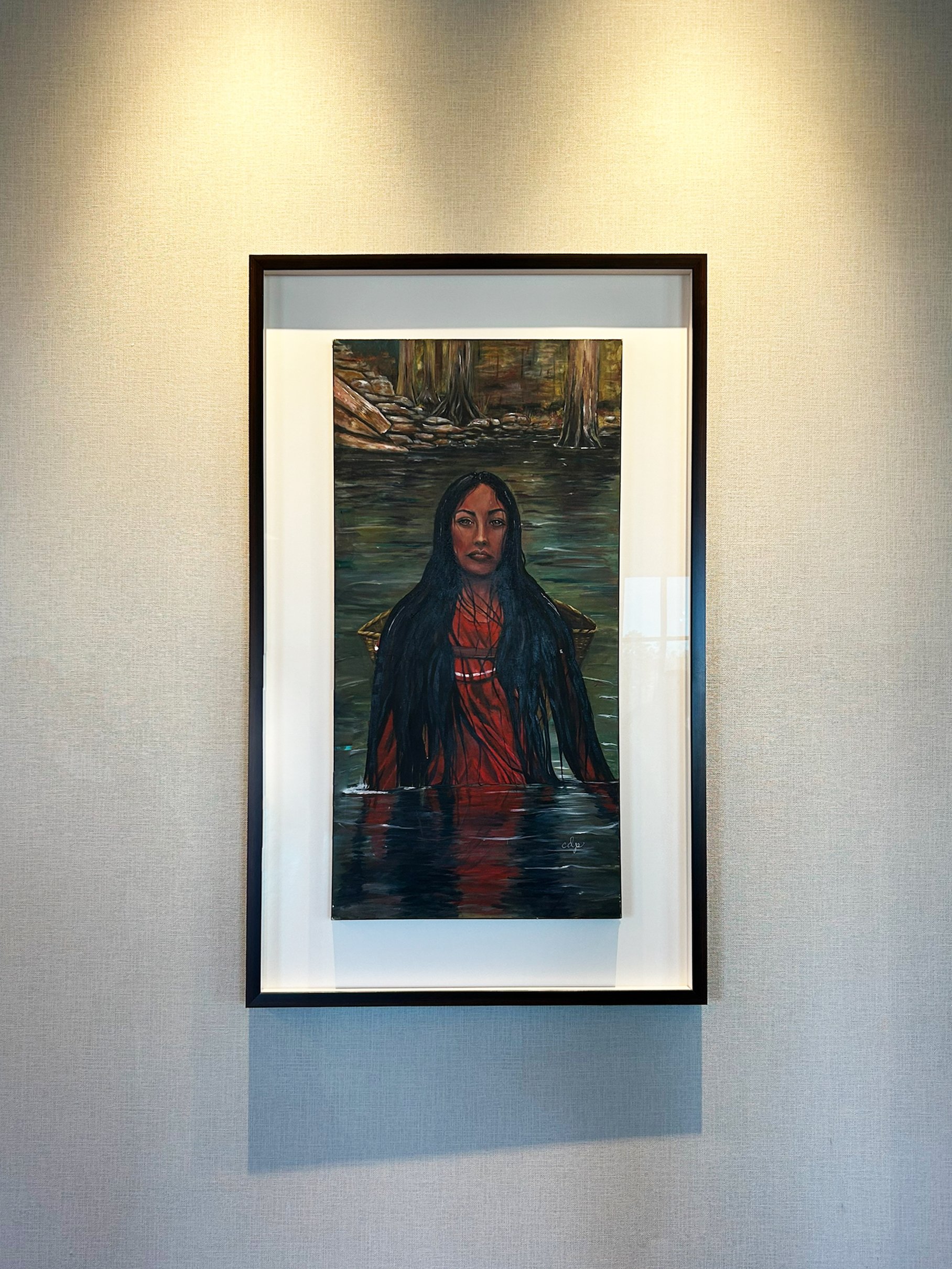
Connie Phillips, 'The Last Crossing'. This piece honors the survivors of the Trail of Tears who crossed the Mountain Fork River on the southern relocation route, a river known for its dangerous rapids and cold, tumultuous waters.
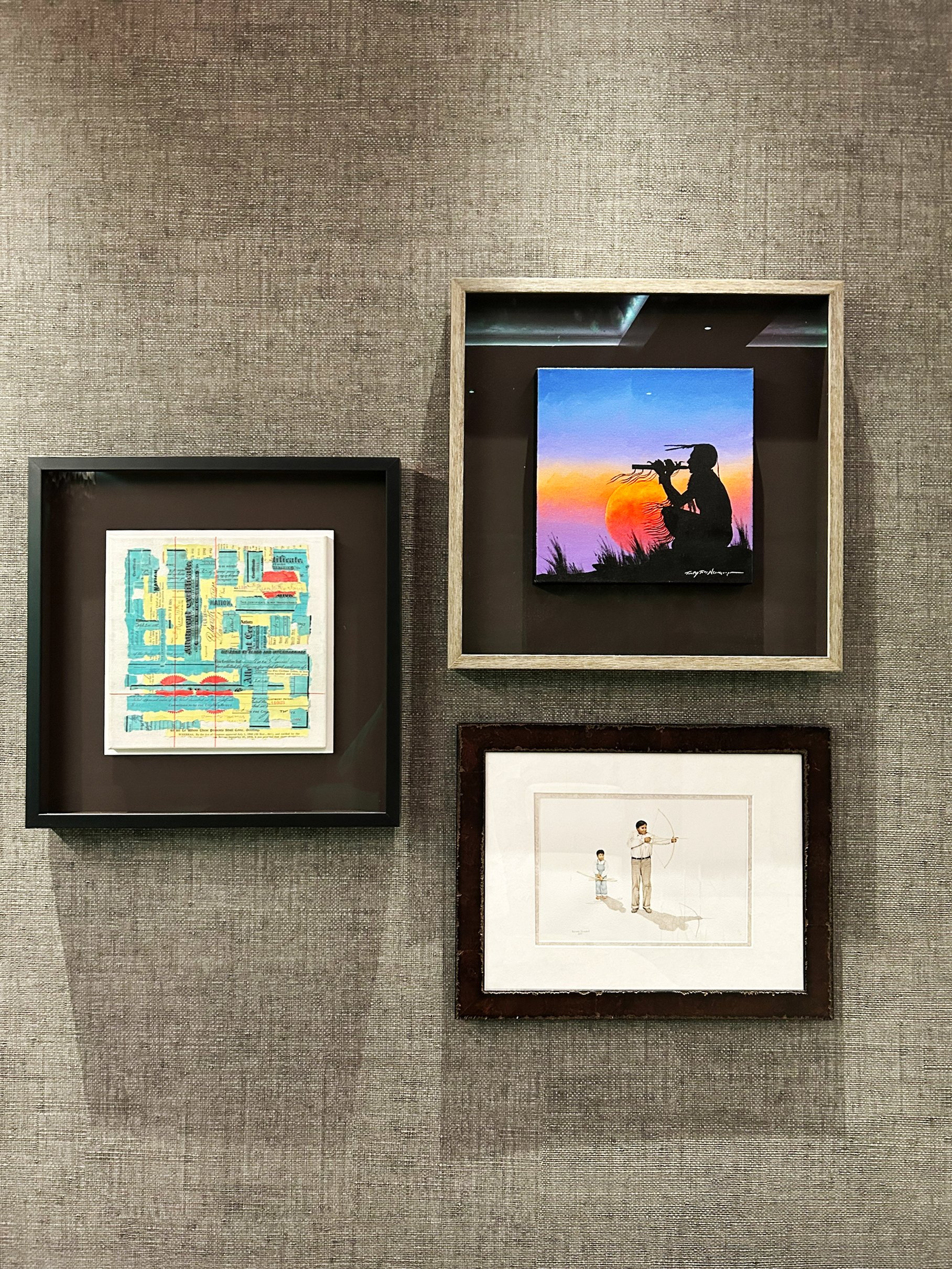
Robert (Bob) Proctor, 'The Allotment' (left); Timothy Nevaquaya, 'Warrior with Flute' (top); Norma Howard, 'Untitled' (bottom)
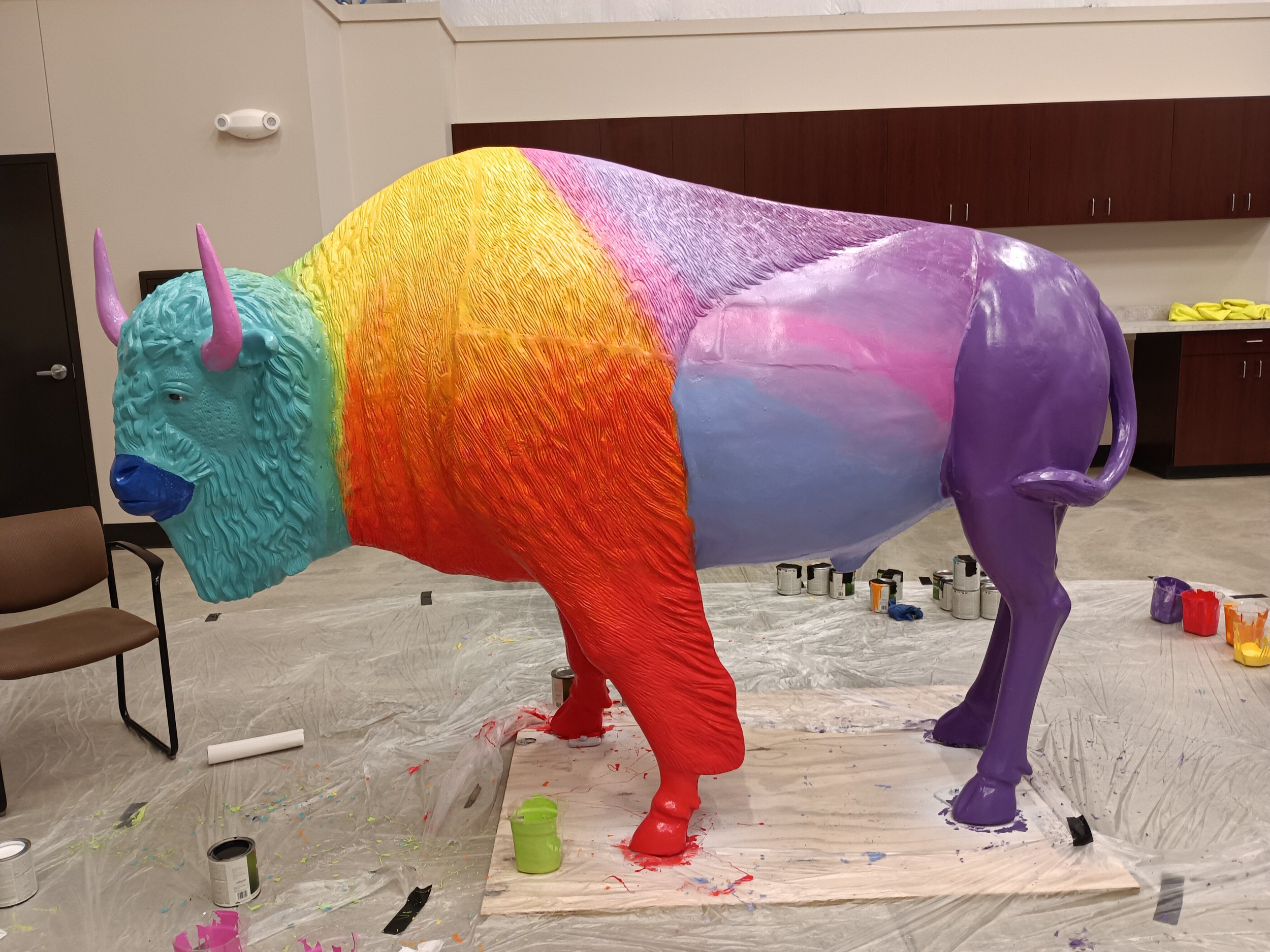
Timothy Nevaquaya's painted buffalo sculpture, a vibrant abstract representation of the spirit and strength of the Choctaw Nation.

Cultural Movement
Gene Smith’s exterior sculpture Do the Dance is a steel artwork showcasing seven dynamic Choctaw Social Dancers, each frozen in a moment of rhythmic movement. Viewers are encouraged to delve into the rich cultural context woven into each symbolic element. For example, the base features six carbon steel 'Heritage Plates' that reflect historical events in a stainless mirror finish. The sculpture also includes an open space, allowing visitors to step in, engage with the piece, and join hands with the dancers.
The collection overall celebrates tribal pride and identity through the medium of traditional dance and the hand-crafted regalia—special clothing and adornments—that Choctaw men and women proudly wear. Social dances have become integral to family functions, celebrations, and special events.
Gene Smith, "Do The Dance"
Gene Smith's interactive sculpture invites visitors to engage with the artwork and join hands with the social dancers.
Gwen Coleman Lester's original painting depicts beadwork and traditional Choctaw dress.
Wani Marshall Coker's signature geometric diamond background creates a harmonious balance between tradition and contemporary expression.
Robert (Bob) Procter "Two Dancers"
Several works in the collection honor Choctaw stickball, one of the oldest organized sports played in America. Part celebration, part ceremony, and part physical test of endurance, stickball continues to be an enduring part of Choctaw culture.
Jane Semple Umsted "Winning Point at Sunset"
Gwen Coleman Lester, acrylic on canvas
Laurie Jean Moore, "Stickball Study"
Brenner Billy, original wall sculpture


Guestroom Artwork
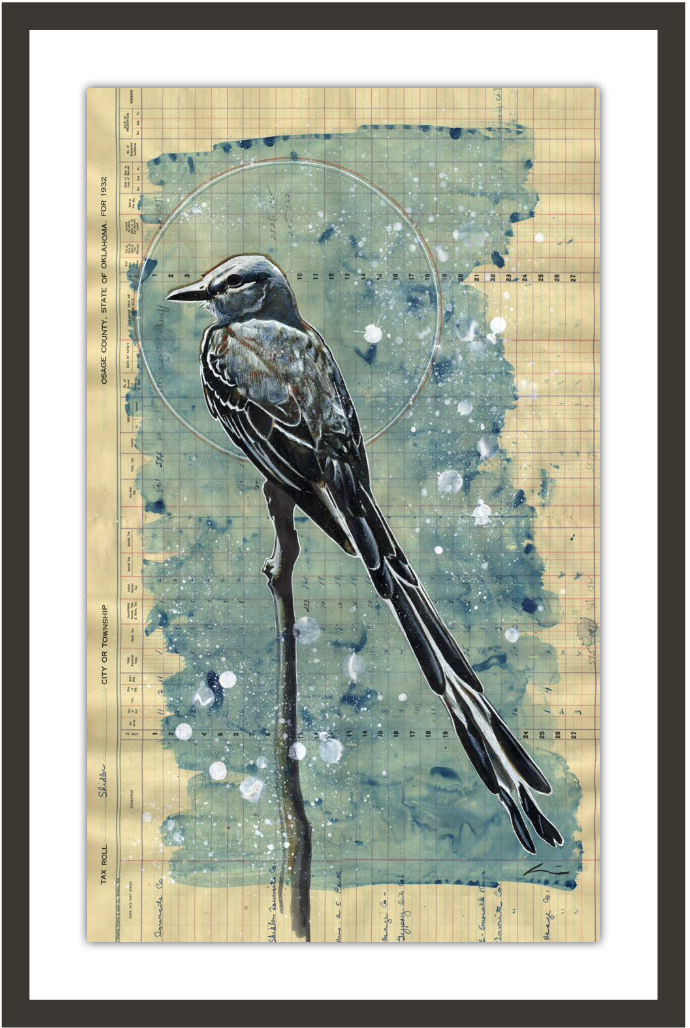
Dylan Cavin "Perched"

Connie Phillips "Hippie Point"

Karen Clarkson "Choctaw Legend of the Alligator"
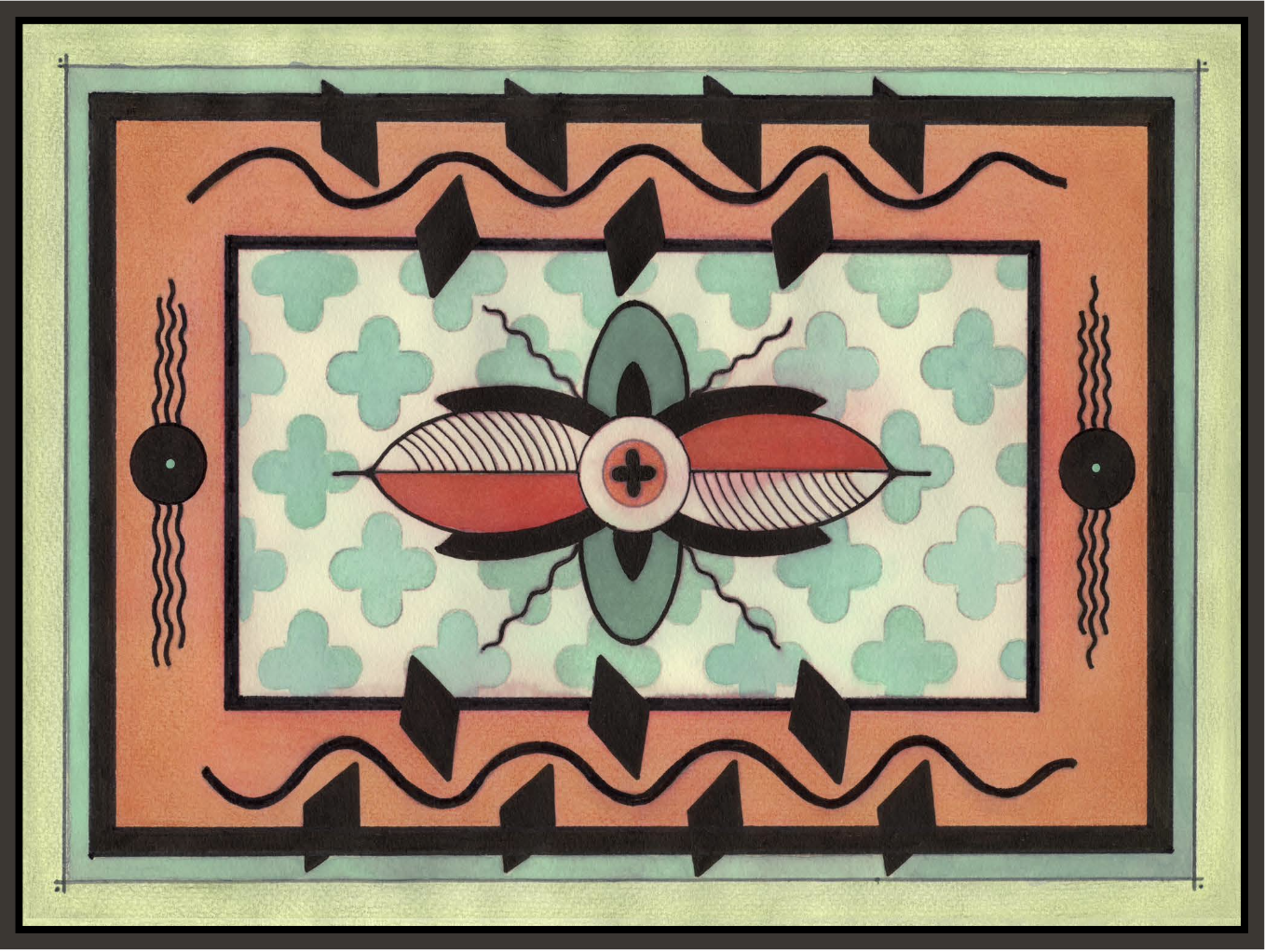
Karen Clarkson "Choctaw Legend of the Poison Vine"

Karen Clarkson "Balance Ledger with Baskets"

Dylan Cavin "OK Big Boy"
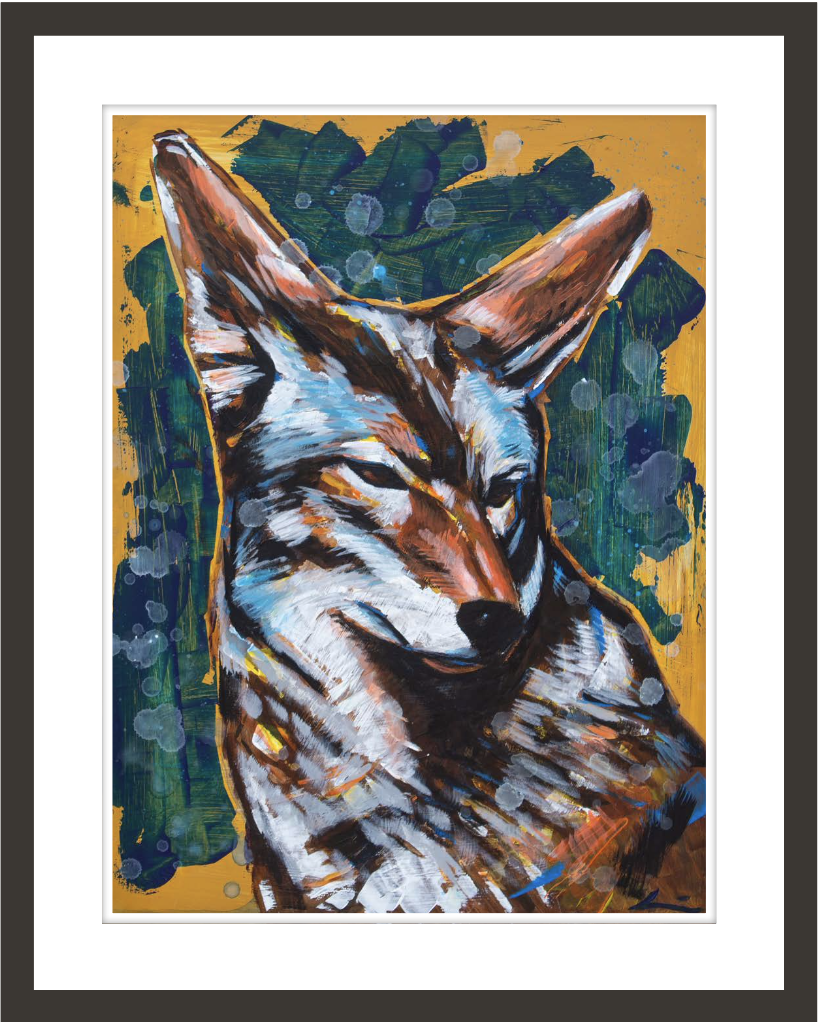
Dylan Cavin "Coyote Too"
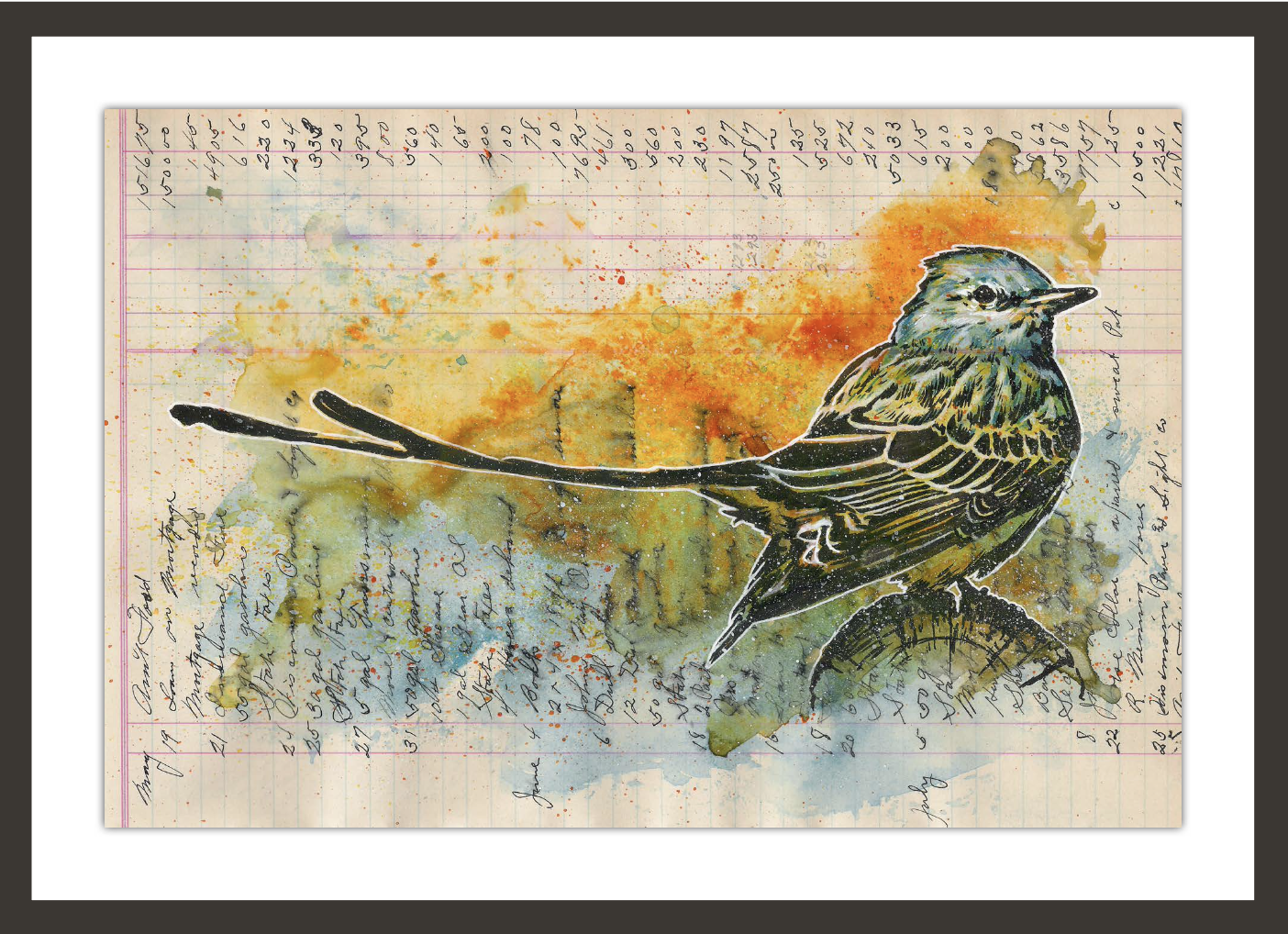
Dylan Cavin "Summertime Scissortail"
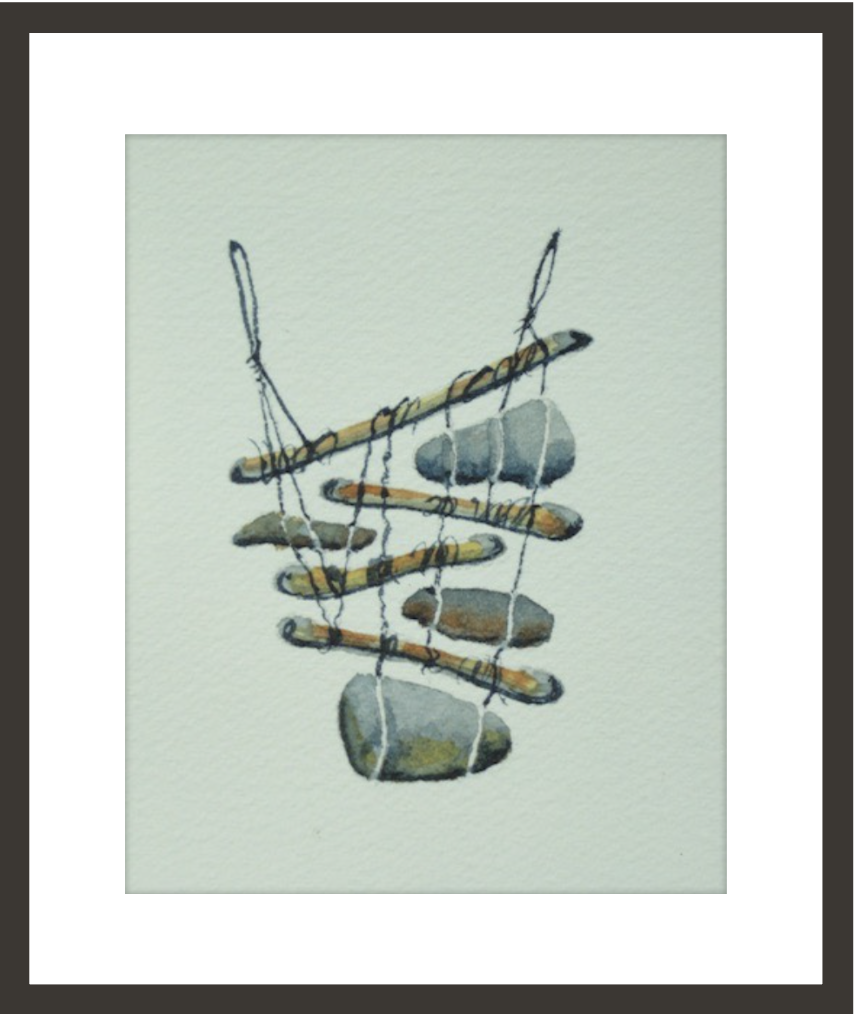
Bob Proctor "Sticks & Stones"
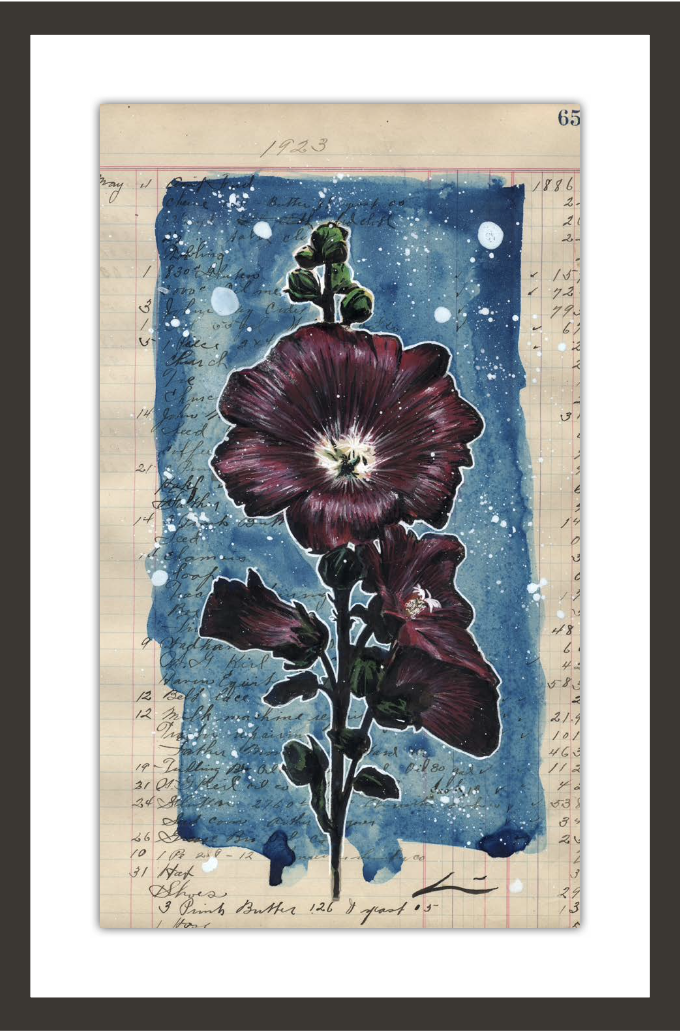
Dylan Cavin "1923 Hollyhocks"
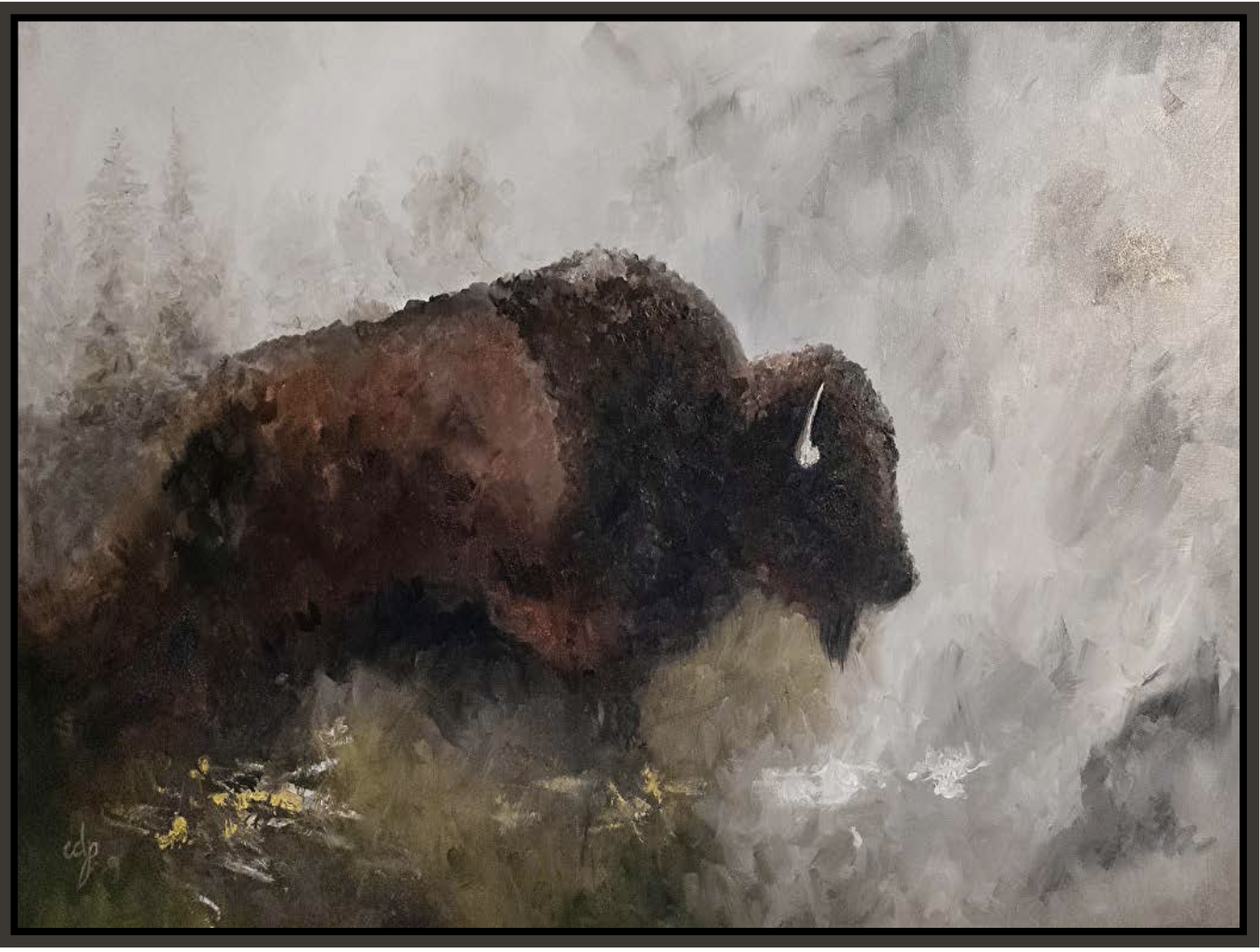
Connie Phillips "Tvshka"
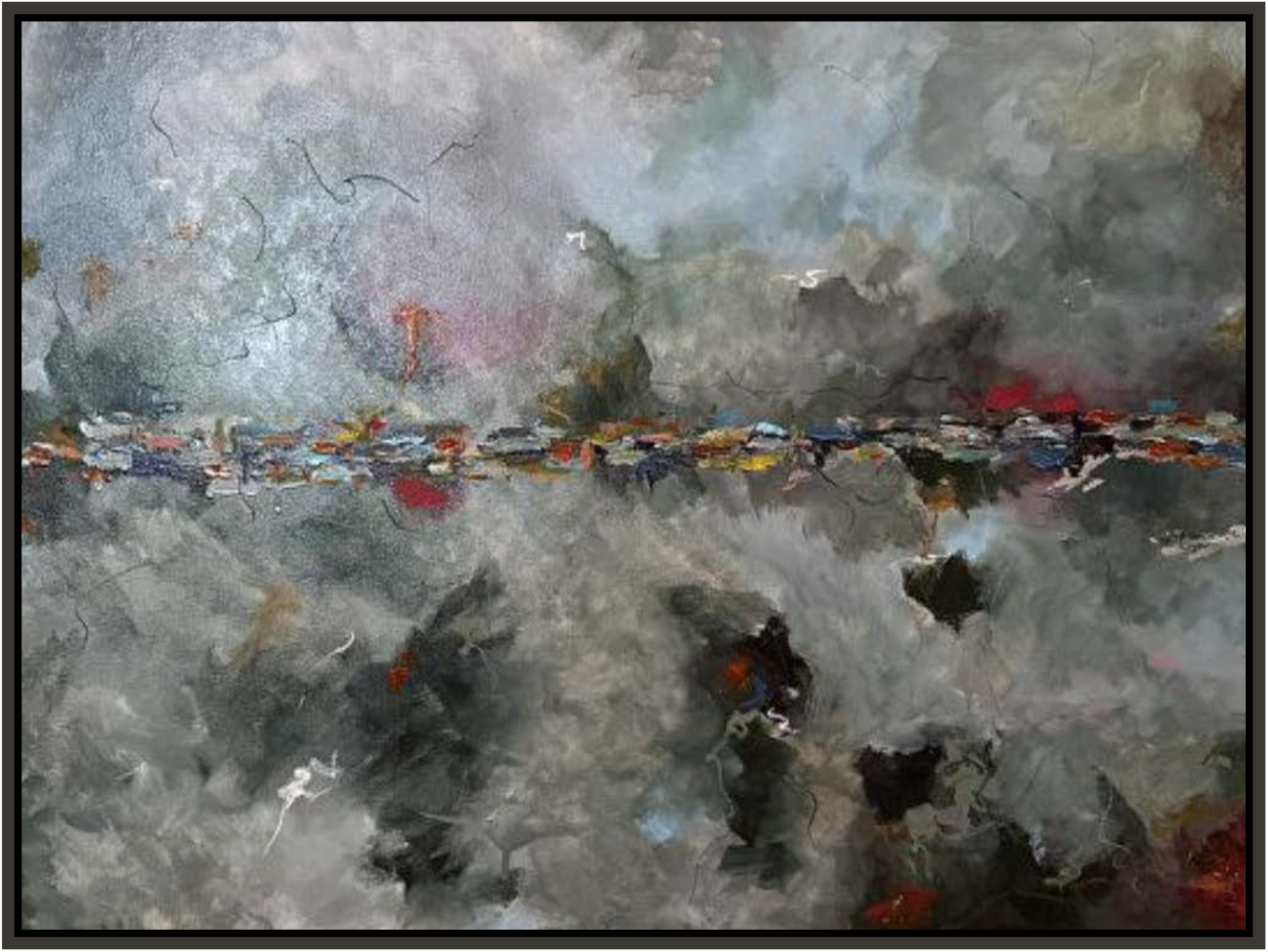
Connie Phillips "The Walk"
The artwork collection serves as a tribute to the interconnectedness of the past, present, and future, echoing the enduring spirit of Choctaw tradition, community, and family. It will stand as a lasting testament to the artistic contributions of the Choctaw Nation, fostering cultural understanding and a deep sense of pride.






